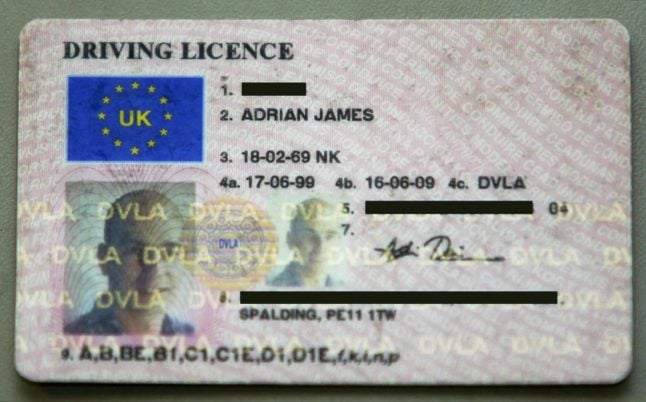Since the UK’s exit from the European Union took effect at the end of 2020, holders of a UK driving licence have been warned that they will have to apply for an Italian licence from scratch once they have been living in Italy for longer than a year.
READ ALSO: What you need to know about getting an Italian driving licence post-Brexit
While most other EU countries have already announced that they have come to reciprocal agreements with the UK that will allow driving licences to be exchanged without the need for a test, no such arrangement has yet been confirmed with Italy.
And even though not all other countries have finalized their agreements, according to a statement in the UK parliament, Italy is further behind than anyone else.
“All EU/EEA Member States, except for Italy, have confirmed reciprocal arrangements for exchanging licences, confirming that a retest will not be required for resident UK nationals,” wrote Conservative Baroness Vere of Norbiton, Parliamentary Under-Secretary of State in the Department for Transport, in response to a recent question from another peer.
“Most of our agreements are permanent arrangements and a small number require formal agreements which will be concluded before the end of this year. Where these agreements are needed, the UK has secured interim arrangements with the relevant Member States. All EU/EEA countries have confirmed that International Driving Permits will not be required by UK visitors.”
A reciprocal agreement between Italy and the UK is still on the table, the British Embassy in Rome has confirmed.

“Negotiations with Italy are on-going on a future agreement for UK nationals living in Italy to be able to exchange their UK driving licence for a local one without re-sitting their test,” a spokesperson told The Local in early April. “UK nationals should consult our Living in Guide for updates.”
The representative also stated: “UK Driving Licences continue to be recognised without additional documentation for visitors and diplomats. UK nationals with over 12 months residency can no longer use their UK driving licence and are required to re-sit their test when obtaining an Italian one.”
The Embassy did not give an indication of when an agreement might be reached.
Holders of a UK licence who live in Italy thus face a quandary: either they embark on the challenging process of retaking their driving test in Italian, or wait an unknown length of time for a future reciprocal agreement – while driving either unlawfully or not at all in the meantime.
READ ALSO:
- EXPLAINED: How do you take your driving test in Italy?
- Getting your Italian driving licence: The language you need to pass your test
- How to register a foreign car in Italy
People who move to Italy with a non-EU driving licence need to get an Italian licence within one year of obtaining residency.
If you started the process of exchanging your UK licence before the end of the Brexit transition period on December 31st 2020, you will not have to re-sit a driving test. But if you hadn’t started the conversion by then, as things stand you will need to retake both the theory and practical tests.
The requirement only applies to UK licence holders who have their full-time residence in Italy. Tourists and second-home owners can continue to use their UK licence when they visit and do not need an International Driving Permit.
While residents with licences from other EU countries – formerly including the UK – can swap their documents without retaking a test, Italy does not exchange licences from most non-EU countries, including the United States, Canada, India, Australia, New Zealand and currently, the UK.
Italy does have reciprocal driving licence agreements with around 20 non-EU countries, including Switzerland, Brazil, the Philippines and Turkey (full list here), which allow holders of these licences to swap their permits without a test.
Elsewhere in the EU, an agreement between the UK and France is reportedly “in the final stages“. In Sweden, UK licence holders are still waiting for the deal to be ratified by the Swedish parliament before they can begin the swap process, while in Spain UK licence holders who did not register to swap before December 31st 2020 face having to take a Spanish test.
Find all The Local’s Brexit updates for UK nationals in Italy here.




 Please whitelist us to continue reading.
Please whitelist us to continue reading.
Thank you Local.
This is the agreement i,m desperately waiting for!
Just to add if you are an Italian going to or living in the UK you can exchange your Italian driving licence without any problems. It such a shame that Italy has not done the same straight away without causing a lot of people problems.
Hi Paul,
Not sure if you are on the Facebook group, “uk citizen rights beyond brexit” there is a new post about driving licence. We are now allowed to use our UK licence until the end of the year!!!!
Hi Graeme. ok thank you i will have a look!